|
|
Creator | Title | Description | Subject | Date |
| 1 |
 |
Kestle, John R. W. | Response to editorial: summer shunting | We thank Dr. Scott for his review and comments about our report of shunt surgery complications in the summer. He makes two very good points. Clearly, different databases are suited for different purposes, and the NIS database used in the study by Smith and colleagues is well suited to evaluating t... | | 2006 |
| 2 |
 |
Kestle, John R. W. | Shunt insertion in the summer: is it safe? | Object. The potential for increased complications related to the arrival of new residents in July each year has not previously been demonstrated in the neurosurgical literature. The authors investigated this phenomenon in children undergoing cerebrospinal fluid shunt surgery. Methods. Data were ob... | Ventriculoperitoneal shunt; July effect; Complication; Shunt insertion | 2006 |
| 3 |
 |
Kestle, John R. W. | Significance of bacteriologically positive ventriculoperitoneal shunt components in the absence of other signs of shunt infection | The purpose of this study was to determine the significance of "asymptomatic bacteriological shunt contamination" (ABSC), defined as a positive bacteriological culture found on a ventricular shunt component in the absence of bacteria in the cerebrospinal fluid (CSF) culture and/or clinical evidence ... | Ventricular shunt; Shunt infection; Ventriculoperitoneal shunt; Asymptomatic bacteriological; Shunt contamination | 1996 |
| 4 |
 |
Kestle, John R. W.; Simon, Tamara Danielle | Infection rates following initial cerebrospinal fluid shunt placement across pediatric hospitals in the United States | Object. Reported rates of CSF shunt infection vary widely across studies. The study objective was to determine the CSF shunt infection rates after initial shunt placement at multiple US pediatric hospitals. The authors hypothesized that infection rates between hospitals would vary widely even after ... | Shunt placement; Pediatric neurosurgery | 2009 |
| 5 |
 |
Dailey, Andrew T. | Risk factors for respiratory failure following operative stabilization of thoracic and lumbar spine fractures | Background: Respiratory failure is a serious complication that can adversely affect the hospital course and survival of multiply injured patients. Some studies have suggested that delayed surgical stabilization of spine fractures may increase the incidence of respiratory complications. However, the... | Respiratory failure; Operative stabilization; Thoracic spine; Lumbar spine | 2006 |
| 6 |
 |
Osborne, Anne G.; Couldwell, William T. | Rathke cleft cyst intracystic nodule: a characteristic magnetic resonance imaging finding. | OBJECT: The fluid content of Rathke cleft cysts (RCCs) displays variable appearances on magnetic resonance (MR) images and can appear indistinguishable from other intrasellar or suprasellar cystic lesions. Intracystic nodules associated with individual RCCs have been noted, but to date their signifi... | Brain Neoplasms; Central Nervous System Cysts; Magnetic Resonance Imaging | 2005-11-01 |
| 7 |
 |
Couldwell, William T. | Rathke cleft cyst intracystic nodule: a characteristic magnetic resonance imaging finding | Object. The fluid content of Rathke cleft cysts (RCCs) displays variable appearances on magnetic resonance (MR) images and can appear indistinguishable from other intrasellar or suprasellar cystic lesions. Intracystic nodules associated with individual RCCs have been noted, but to date their signifi... | | 2005 |
| 8 |
 |
Kestle, John R. W. | Tracking resident work hours: available software is not yet ideal, but it's helpful | An ideal system would be completely passive and would allow more detailed tracking of activity inside the hospital. A new reality began July 1. We are all now responsible for tracking our residents' work hours and ensuring compliance with the new regulations mandated by the Accreditation Council fo... | Resident work hours; Tracking; TimeClock system | 2003 |
| 9 |
 |
Kestle, John R. W. | Predicting slitlike ventricles in children on the basis of baseline characteristics at the time of shunt insertion | Object. Slit ventricle syndrome (SVS) is a delayed complication of shunt insertion and occurs only in children with slitlike ventricles after shunt placement. Although SVS appears to be related to early shunt placement, its predisposing factors are largely unknown. Methods. Baseline data in 737 chi... | Slitlike ventricles; Slit ventricle syndrome; Shunt insertion; Predictive factor; Ventriculoperitoneal shunt; Pediatric neurosurgery | 2007 |
| 10 |
 |
Couldwell, William T. | Use of the h index in neurosurgery | Object. Assessing academic productivity through simple quantification may overlook key information, and the use of statistical enumeration of academic output is growing. The h index, which incorporates both the total number of publications and the citations of those publications, has been recently ... | | 2009-01-01 |
| 11 |
 |
Schmidt, Meic H. | Perioperative complications and neurological outcomes of first and second craniotomies among patients enrolled in the Glioma Outcome Project | In many new clinical trials of patients with malignant gliomas surgical intervention is incorporated as an integral part of tumor-directed interstitial therapies such as gene therapy, biodegradable wafer placement, and immunotherapy. Assessment of toxicity is a major component of evaluating these no... | Perioperative complications; Neurological outcomes; Glioma Outcome Project | 2003 |
| 12 |
 |
Kestle, John R. W.; Brockmeyer, Douglas Lee | Evaluation of the necessity of postoperative imaging after craniosynostosis surgery | Object. Childhood radiation exposure increases the lifetime risk of cancer from an estimated 0.07 to 0.35%. Neurological evaluation of patients after cranial vault reconstruction for synostosis repair is often complicated by pain medication, sedation, intubation, swelling, and dressings; therefore c... | Computed tomography; Cranial vault reconstruction; Pediatric neurosurgery; Radiation dose; Postoperative imaging | 2007 |
| 13 |
 |
Kestle, John R. W. | Value of postoperative surveillance imaging in the management of children with some common brain tumors | The rationale for obtaining surveillance computerized tomography (CT) scans or magnetic resonance (MR) images in pediatric patients with brain tumors is that early detection of recurrence may result in timely treatment and better outcome. The purpose of this study was to investigate the value of sur... | Brain neoplasm; Brain tumors; Computerized tomography scanning; Surveillance; Postoperative surveillance | 1996 |
| 14 |
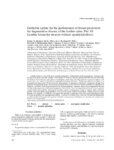 |
Dailey, Andrew T. | Guideline update for the performance of fusion procedures for degenerative disease of the lumbar spine. Part 10: Lumbar fusion for stenosis without spondylolisthesis | Lumbar stenosis is one of the more common radiographic manifestations of the aging process, leading to narrowing of the spinal canal and foramen. When stenosis is clinically relevant, patients often describe activity-related low-back or lower-extremity pain, known as neurogenic claudication. For tho... | | 2014-01-01 |
| 15 |
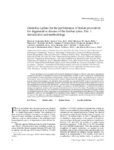 |
Dailey, Andrew T. | Guideline update for the performance of fusion procedures for degenerative disease of the lumbar spine. Part 1: Introduction and methodology | Fusion procedures are an accepted and successful management strategy to alleviate pain and/or neurological symptoms associated with degenerative disease of the lumbar spine. In 2005, the first version of the "Guidelines for the performance of fusion procedures for degenerative disease of the lumbar ... | | 2014-01-01 |
| 16 |
 |
Couldwell, William T. | Hemorrhagic and nonhemorrhagic Rathke cleft cysts mimicking pituitary apoplexy | Object. Rathke cleft cysts (RCCs) are infrequently symptomatic, and apoplexy is one of the most unusual presentations. Only a few cases of apoplexy associated with RCCs have been reported, and their clinical, imaging, surgical, and pathological features are poorly understood. In the cases that have ... | | 2008-01-01 |
| 17 |
 |
Couldwell, William T. | Efficacy of clip-wrapping in treatment of complex pediatric aneurysms | Purpose: Pediatric aneurysms (PAs) are distinct from their adult counterparts with respect to typical location, aneurysm type, and known predisposing risk factors. Many strategies have been employed to treat PAs, but, although it has been used frequently in adults, clip-wrapping in pediatric patient... | | 2012-01-01 |
| 18 |
 |
Schmidt, Meic H. | Repeated operations for infiltrative low-grade gliomas without intervening therapy | Progression of infiltrative low-grade gliomas (LGGs) has been reported previously. The limitations of such studies include diverse histological grading systems, intervening therapy, and the lack of histological confirmation of malignant tumor progression. The aim of this study was to determine tumo... | Infiltrative low-grade gliomas; LGG; Tumor progression; Repeated operations; Tumor recurrence | 2003 |
| 19 |
 |
Schmidt, Meic H.; Kestle, John R. W. | Treatment of metastatic spinal epidural disease: a review of the literature | Object. Spinal cord compression is one of the most dreaded complications of metastatic cancer. It can lead to a number of sequelae, including pain, spinal instability, neurological deficits, and a reduction in the patient's quality of life. Except in selected circumstances, treatment is palliative. ... | Spinal cord compression; Metastasis; Radiation therapy; Stereotactic radiosurgery | 2003 |
| 20 |
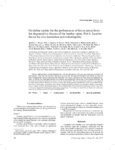 |
Dailey, Andrew T. | Guideline update for the performance of fusion procedures for degenerative disease of the lumbar spine. Part 8: Lumbar fusion for disc herniation and radiculopathy | Patients suffering from a lumbar herniated disc will typically present with signs and symptoms consistent with radiculopathy. They may also have low-back pain, however, and the source of this pain is less certain, as it may be from the degenerative process that led to the herniation. The surgical al... | | 2014-01-01 |
| 21 |
 |
Dailey, Andrew T. | Guidelines for the performance of fusion procedures for degenerative disease of the lumbar spine. Part 7: intractable low-back pain without stenosis or spondylolisthesis | Standards. Lumbar fusion is recommended as a treatment for carefully selected patients with disabling lowback pain due to one- or two-level degenerative disease without stenosis or spondylolisthesis. Guidelines. There is insufficient evidence available to support a treatment guideline. Options. An... | Fusion; Lumbar spine; Degenerative disease; Low back pain | 2005 |
| 22 |
 |
Dailey, Andrew T. | Guideline update for the performance of fusion procedures for degenerative disease of the lumbar spine. Part 3: Assessment of economic outcome | A comprehensive economic analysis generally involves the calculation of indirect and direct health costs from a societal perspective as opposed to simply reporting costs from a hospital or payer perspective. Hospital charges for a surgical procedure must be converted to cost data when performing a c... | | 2014-01-01 |
| 23 |
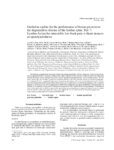 |
Dailey, Andrew T. | Guideline update for the performance of fusion procedures for degenerative disease of the lumbar spine. Part 7: Lumbar fusion for intractable low-back pain without stenosis or spondylolisthesis | Establishing an appropriate treatment strategy for patients presenting with low-back pain, in the absence of stenosis or spondylolisthesis, remains a controversial subject. Inherent to this situation is often an inability to adequately identify the source of low-back pain to justify various treatmen... | | 2014-01-01 |
| 24 |
 |
Couldwell, William T.; Gillespie, David L.; Jensen, Randy L. | Identification of hypoxia-induced genes in a malignant glioma cell line (U-251) by cDNA microarray analysis | Overcoming the metabolic restrictions of hypoxia may allow the progression of lower-grade tumors to glioblastoma multiforme. Our findings of up-regulation of HIF-1α and its downstream targets VEGF, GLUT-1, and CAIX in higher-grade gliomas support this hypothesis. We compared the gene expression pro... | Glioblastoma multiforme; U-251; Hypoxia; Microarray analysis; Brain tumor; Depp; Astrocytoma | 2007 |
| 25 |
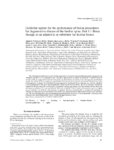 |
Dailey, Andrew T. | Guideline update for the performance of fusion procedures for degenerative disease of the lumbar spine. Part 14: Brace therapy as an adjunct to or substitute for lumbar fusion | The utilization of orthotic devices for lumbar degenerative disease has been justified from both a prognostic and therapeutic perspective. As a prognostic tool, bracing is applied prior to surgery to determine if immobilization of the spine leads to symptomatic relief and thus justify the performanc... | | 2014-01-01 |

























